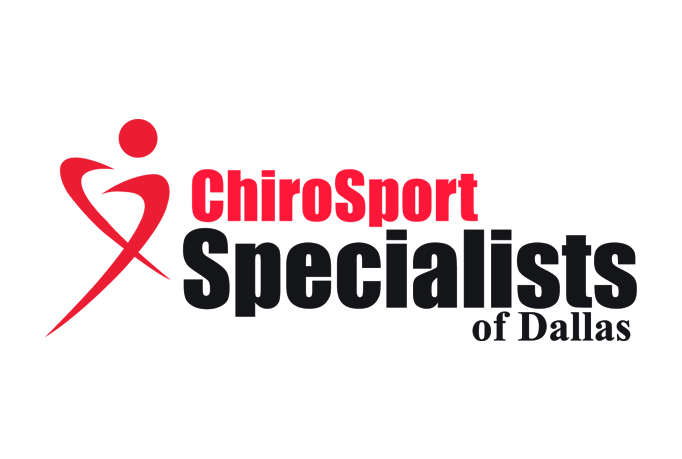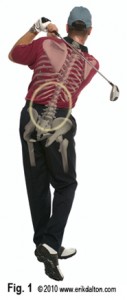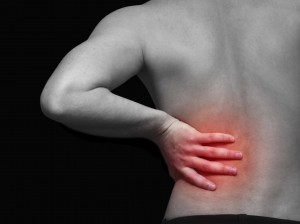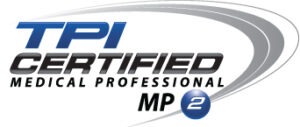Why do people get hurt playing golf?
Have you ever wondered why people get hurt playing golf? After all golf is a recreational sport by nature. Traditionally golfers are not considered athletes. If golf is not athletic, why do you get hurt why playing or why do you hurt after playing?
Not so fast. Professional golfers work just as hard if not harder than most other athletes. I will get to amateur golfers in a minute.
A typical tournament day consists of getting up around 4 am for a workout/warm-up. Then they go to the driving range and hit a bucket of balls (probably around 75 balls or so not including practice swings). After hitting some bunker shots and putts they head to the tee to begin their round. With practice swings and full swings, professionals take around 100 maybe 200 full swings per round. All of this strung out over 4 hours while talking 4-5 miles. After a round, they head to the range and hit another bucket or 2 of balls, then head to the gym for a post workout/cool down. All in all professionals are up before dawn and are still working after dusk, while
The data is unclear on professionals but research on amateurs show they achieve 70-80% of their maximum heart rate while walking and playing golf (Lindsay 2000). This is the same heart rate range we target when prescribing an exercise program to improve cardiovascular health. How many exercise programs do you know last for 4 hours straight, not to mention the peak muscle activity that the golf swing produces.
Let me mention the peak muscle activity that the golf swing produces. Professional golfers swing at 80% of their peak muscle activity (Hosea 1990). Keep in mind they do this hundreds, maybe thousands of times per day, at least 5 maybe 6 days a week, and for months in a row.
So can you see now why professional golfers get hurt? You might or you might not, let me just tell you. Professional golfers get hurt from overuse. Overtime their bodies start to breakdown, because scheduling does not allow proper time to rest. Not to mention they keep extending the golf season and decreasing the off season to allow time to rest.
Here’s a basic overview of the forces on the spine during the golf swing then I will get to amateurs. According to Hosea, the golf swing produces a complex loading pattern in the lumbar spine including shear, compression and axial torsional loads combined with rapid changes in direction of the forces.
- Shear loads
- The average peak shear load for amateurs and professionals is 596 N and 329 N respectively. Shear Forces of 570 N have been shown to cause stress fractures of the pars interarticularis and shear loads of 848 N have been recorded in male rowers (Hosea 1994).
- Compressional loads
- Compressional loads of up to 8x a person’s body weight or about 6100 N in amateurs and 7500 N in professionals. Running produces around 3x body weight in compressional loads (Lindsey 2000). Compressional forces in D1 college football lineman while hitting a blocking sled equaled about 8600 N. In cadavers, disc hernation can happen with a compressive load around 5400 N (Gluck 2008). Compression fractures in osteoperotic individuals have been reported in the literature.
- Axial torsion loads
- Axial torsional loads are limited by the facet joint orientation and the annulus fibrosis portion of the intervertebral disc. Most rotational forces are absorbed by the surrounding stabilizers (muscule, ligament, tendon). The structures responsible for rotation in the golf swing include the hips and thoracic spine. However when these structures lose their motion, the lumbar spine and surrounding structures absorb more force than they can handle and will breakdown. Therefore, it is no surprise that common low back injuries include lumbar sprain/strain, facet syndrome and disc herniation.
- In TPI’s, SFMA’s and my opinion if you only treat the golfer’s low back without addressing the underlying dysfunction (T-spine and hips) the golfer will take longer to heal and risk re-injury once healed.
Here’s my point. The forces on the spine during the golf swing are clearly enough to cause injury. However, when biomechanics are sound, the likelihood of an injury decreases. Also, the body is built with ways to disperse these forces on the spine including your bones (vertebra of your spine), muscles, ligaments and tendons. When conditioned properly these tissues are able to absorb and disperse these forces. However, when they are overused and abused is when things break down and you get hurt.
Amateurs on the other hand, are more likely to get injured due to biomechanical problems. They either have dysfunction in their bodies which are preventing them from swinging the club properly, or they just don’t understand how to swing the club properly. Here is just a quick list of some of the reasons why amateurs get injured besides biomechanical.
- Amateurs swing at 90% of the peak muscle activity (compared to 80% in professionals as stated earlier). 90% of peak muscle activity is equal to a 4 Rep max (Hosea 1990). In order words lift the maximum weight you can before total fatigue 4 times. Then do that 200-300 times in a row and then tell me golf isn’t a physical sport.
- Physical
- Deconditioned
- Not cardiovascular shape or muscle strength but endurance shape. Golf is cardiovascular but it is more about muscular endurance, not strength. Don’t get me wrong you need strength to be a good golfer, however when tissues become fatigued after a 4 hour round is when injuries happen.
- Range of motion
- Lack of range of motion can place excess stress on different parts of the body. One of them being the low back, another one being the shoulder. This is especially important when considering that amateurs swing 90% of their muscle strength when they do not possess range of motion needed to swing the club properly.
- The 2 most common problems we see are back pain from a lack of hip and/or Thoracic spine mobility and shoulder pain because a lack of T-spine mobility.
- Motor control
- One of the biggest problems I see is the inability to control certain parts of your body. For example, many golfers cannot control their pelvis without using your upper body. This can also fall under biomechanical if the golfer is unable to control the muscles needed to swing the golf club properly.
- The number 1 risk for injury is previous injury. Once you injure that body part your chances increase to injury that body part again. Have you ever wondered why? Well now we know that when you get hurt, you alter the control of your muscles subconsciously. Once the tissue heals, you still have that altered motor control unless you retrain the correct motor pattern. This can also lead to problems down the road.
- Because you sprained your ankle 1 time in high school, probably explains why you have knee or hip pain now, maybe even pain on the opposite side of the body. When you sprained that ankle your body shifted your body weight to the other side, and you have been that way for 40 years. Now your opposite hip is showing signs of arthritis.
- Deconditioned
- Poor nutrition
- Overuse
- Amateurs get over-use injuries too just like professionals, however biomechanical dysfunction causing injury is more prevalent.
This is what you should do. Find somebody you trust to help address your injury. A good place to start is www.mytpi.com and search for a Medical, Fitness or Teaching professional near you. These types of professionals understand golf swing mechanics and how they relate to the body.
Lindsay 2000. A review of injury characteristics aging factors and prevention programs for the older golfer.
Hosea 1990, 1994. Biomechanical analysis of the golfer’s back.
Gluck 2008. The Lumbar spine and low back pain in golf: a literature review of swing biomechanics and injury prevention.
TPI Level 1 Manual
TPI Level 2 Manual



